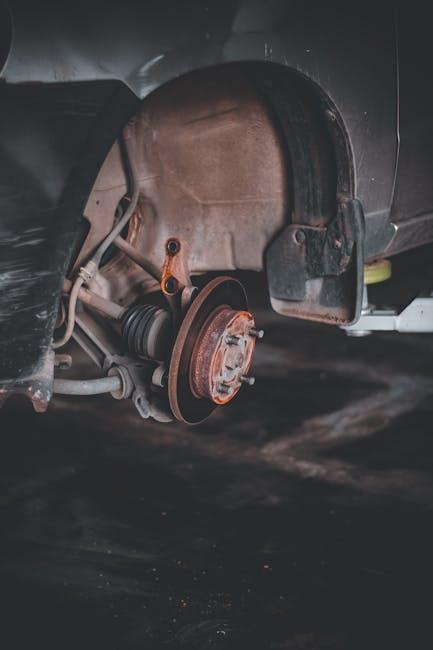In the quiet moments before you press the brake pedal, a complex dance of engineering and safety unfolds—one that often goes unnoticed until it’s too late. Timely brake inspection is the unsung hero of vehicle maintenance, a crucial practice that ensures every stop is secure, every journey controlled, and every passenger protected. As our roads become busier and speeds escalate, understanding the importance of regular brake checks isn’t just wise—it’s essential. This article delves into why keeping a close eye on your brakes isn’t merely about maintenance, but about preserving life and confidence behind the wheel.
Table of Contents
- The Hidden Dangers of Neglecting Brake Inspections
- How Regular Brake Checks Enhance Vehicle Safety
- Signs Your Brakes Need Immediate Attention
- The Role of Timely Brake Inspections in Preventing Costly Repairs
- Expert Tips for Scheduling and Conducting Effective Brake Inspections
- Maximizing Brake Performance Through Routine Maintenance
- Q&A
- In Summary
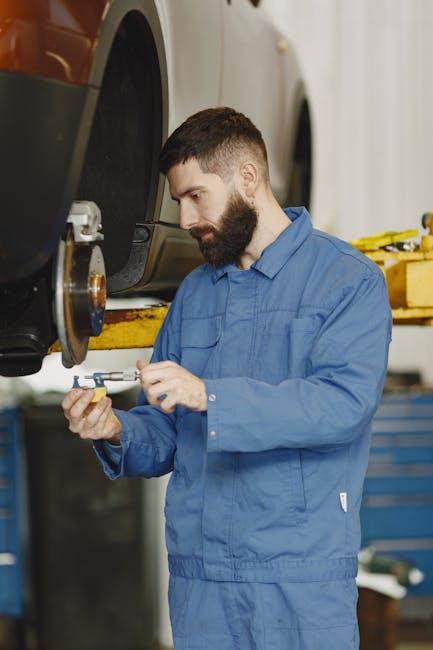
The Hidden Dangers of Neglecting Brake Inspections
Overlooking regular brake assessments can lead to unexpected failures that jeopardize safety on the road. When brakes wear down unnoticed, they lose efficiency, increasing stopping distances and the risk of accidents. Not only do worn-out brake pads create an unsettling squealing noise, but they can cause serious damage to rotors and calipers, which results in costly repairs. Drivers often underestimate the subtle signs of brake issues, such as vibrations or a soft brake pedal, until the symptoms become critical. This complacency can escalate minor problems into dangerous emergencies.
Key risks of ignoring brake inspections include:
- Reduced control during sudden stops
- Increased brake fade under heavy use
- Potential for brake fluid leaks causing total brake failure
- Damage to other braking system components
| Symptom | Potential Cause | Risk Level |
|---|---|---|
| Squealing noise | Worn brake pads | Medium |
| Soft brake pedal | Brake fluid leak | High |
| Vibrations during braking | Warped rotors | Medium |
| Longer stopping distances | Brake wear or failure | High |

How Regular Brake Checks Enhance Vehicle Safety
Ensuring that your vehicle’s braking system functions flawlessly is a cornerstone of road safety. Routine inspections allow for the early detection of wear and tear on crucial components such as brake pads, rotors, and fluid levels. These proactive checks not only prevent sudden brake failures but also enhance the responsiveness of your brakes, dramatically reducing stopping distances during emergencies. Regular brake maintenance ultimately fortifies your vehicle’s ability to protect all passengers and pedestrians alike.
Ignoring minor brake issues can quickly transform into hazardous driving conditions. Frequent assessments help identify signs like squealing noises, vibrations, or a softer brake pedal—symptoms that signal underlying problems. Below is a simple guide to common brake issues and their safety impact:
| Brake Issue | Potential Risk | Safety Benefit of Timely Fix |
|---|---|---|
| Worn Brake Pads | Reduced stopping power | Maintains effective friction |
| Leaking Brake Fluid | Brake failure | Ensures consistent brake pressure |
| Warped Rotors | Brake vibrations | Smoother, controlled braking |
- Increase vehicle reliability
- Prevent costly repairs
- Promote safer road sharing

Signs Your Brakes Need Immediate Attention
When your vehicle’s braking system begins to show signs of wear or malfunction, it’s crucial to act without delay. One of the most obvious indicators is a persistent squealing or grinding noise when applying the brakes. This sound often signals worn brake pads or damaged rotors, which, if ignored, can escalate to costlier repairs and dangerous driving conditions. Additionally, a soft or spongy brake pedal can indicate fluid leaks or air in the brake lines, severely reducing stopping power and increasing the risk of accidents.
Other warning signs include your car pulling to one side during braking, which points to uneven brake pad wear or calibration issues, and vibrations or pulsations felt through the brake pedal, suggesting warped rotors. The table below summarizes key symptoms and their potential causes, helping you quickly assess whether immediate professional inspection is needed:
| Symptom | Possible Cause |
|---|---|
| Squealing or Grinding Noises | Worn Brake Pads or Rotors |
| Soft or Spongy Pedal | Brake Fluid Leak or Air in Lines |
| Vehicle Pulls to One Side | Uneven Pad Wear or Caliper Issues |
| Pedal Vibrations | Warped Rotors |
| Brake Warning Light | System Fault or Low Fluid |
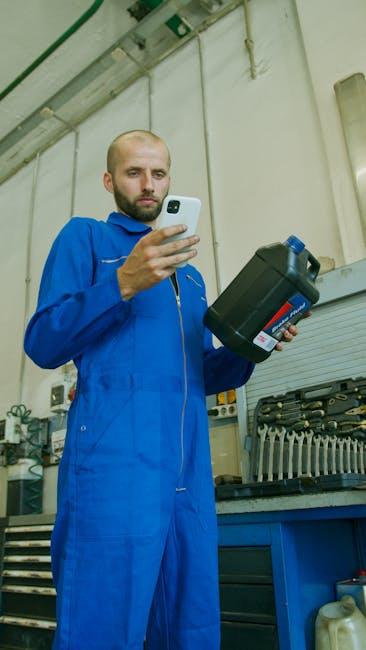
The Role of Timely Brake Inspections in Preventing Costly Repairs
Regular brake inspections serve as a critical checkpoint, catching wear and tear before it evolves into expensive damage. When brake components such as pads, rotors, or calipers are monitored consistently, early signs of degradation can be addressed promptly, preventing complete system failures. This proactive approach not only saves money on costly replacements but also extends the lifespan of your braking system, ensuring your vehicle remains safe and reliable. Ignoring minor issues can quickly escalate, turning a routine check into an urgent and expensive repair scenario.
- Detect worn brake pads early to avoid rotor damage
- Identify fluid leaks that could lead to brake failure
- Prevent uneven wear which can destabilize braking efficiency
| Brake Issue | Potential Repair Cost | Inspection Benefit |
|---|---|---|
| Worn brake pads | $150 – $300 | Early replacement saves rotor costs |
| Damaged rotors | $300 – $500 | Prevents uneven braking |
| Brake fluid leak | $200 – $400 | Avoids system failure |
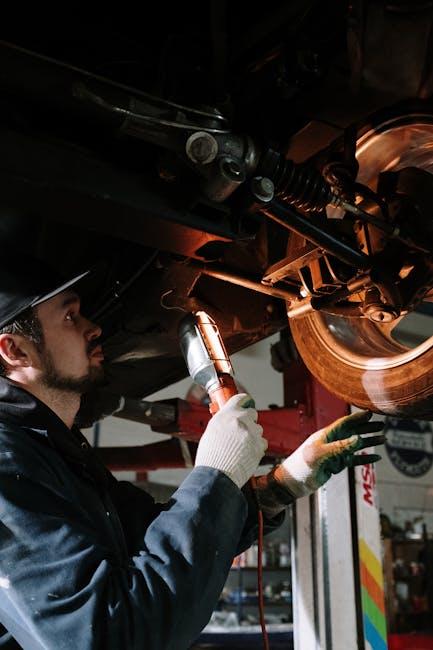
Expert Tips for Scheduling and Conducting Effective Brake Inspections
Scheduling brake inspections requires more than just marking a calendar date. Consistency and attention to driving conditions can make a world of difference. Keep in mind that harsh weather, heavy traffic, and frequent stop-and-go driving accelerate brake wear. Establish a routine by checking the brake system every 6 months or after every 6,000 miles, whichever comes first. This ensures you catch any signs of wear or malfunction before they escalate. Additionally, pairing brake inspection appointments with other vehicle maintenance can save time and keep the car’s health in check.
When conducting the inspection, approach it systematically. Start by visually examining brake pads for thickness and uneven wear. Listen for unusual sounds like squealing or grinding, and test brake response during a slow drive. Here’s a quick checklist for effective inspections:
- Brake Pad Thickness: Minimum 3 mm recommended.
- Rotor Condition: Smooth surface, no deep grooves.
- Brake Fluid Level: Within manufacturer’s recommended range.
- Brake Lines: No leaks or cracks.
| Inspection Area | What to Look For | Follow-Up Action |
|---|---|---|
| Brake Pads | Thickness below 3 mm or uneven wear | Replace Immediately |
| Rotors | Grooves or warping | Resurface or Replace |
| Brake Fluid | Low level or discoloration | Top up or Flush System |
| Brake Lines | Leaks or visible damage | Repair or Replace |
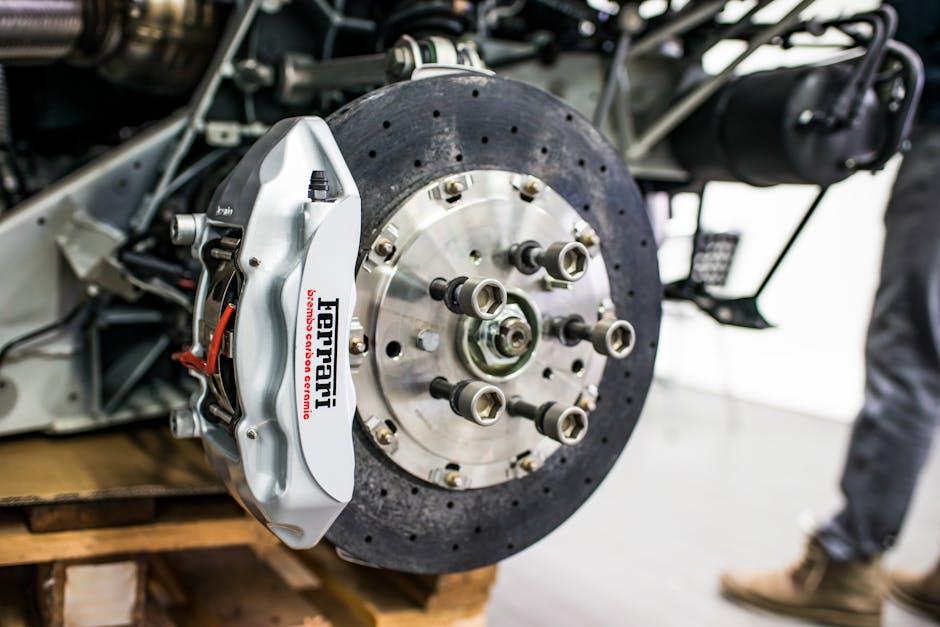
Maximizing Brake Performance Through Routine Maintenance
Keeping your vehicle’s braking system in top shape isn’t just about safety—it’s about ensuring reliability every time you hit the road. Routine maintenance allows you to catch subtle signs of wear before they escalate into costly repairs or hazardous failures. From brake pads to rotors, every component plays a crucial role in delivering smooth stopping power. Regular inspections help identify issues such as uneven pad wear, fluid leaks, or corroded parts early on, significantly extending the lifespan of your brake system and enhancing overall performance.
Incorporating simple yet consistent maintenance steps can go a long way. Here are key elements that should be checked during each service visit:
- Brake Pad Thickness: Ensures sufficient material for optimal stopping power.
- Rotor Condition: Checks for warping or scoring that may affect braking smoothness.
- Brake Fluid Levels: Maintains proper hydraulic pressure and prevents moisture contamination.
- Brake Lines: Inspects for cracks or leaks that could lead to sudden brake failure.
| Maintenance Task | Frequency | Benefit |
|---|---|---|
| Brake Pad Inspection | Every 10,000 miles | Prevents uneven wear |
| Brake Fluid Replacement | Every 2 years | Avoids fluid contamination |
| Rotor Resurfacing | As needed | Ensures smooth braking |
| Full System Check | Annually | Detects all potential issues |
Q&A
Q&A: The Importance of Timely Brake Inspection
Q1: Why is timely brake inspection crucial for vehicle safety?
A1: Brakes are the primary safety component of any vehicle. Timely inspections ensure that wear, damage, or fluid issues are detected early, preventing brake failure and keeping drivers and passengers safe on the road.
Q2: How often should brake inspections be conducted?
A2: While recommendations vary, a general rule of thumb is to have brakes inspected every 10,000 to 12,000 miles or at least once a year. However, if you notice symptoms like squeaking or reduced responsiveness, an immediate check is wise.
Q3: What are common signs that indicate a brake inspection is needed?
A3: Warning signs include unusual noises (squeals or grinding), vibrations when braking, a spongy brake pedal, longer stopping distances, or warning lights on your dashboard. These symptoms signal that your brakes need urgent attention.
Q4: Can neglecting brake inspection lead to costly repairs?
A4: Absolutely. Ignoring brake maintenance can cause rotor damage, hydraulic system leaks, or complete brake failure. Repairing these damages is often more expensive than regular inspections and simple part replacements.
Q5: Beyond safety, are there any other benefits to timely brake inspections?
A5: Yes, regular inspections help maintain vehicle performance and can improve fuel efficiency by ensuring the brake system isn’t causing drag. They also preserve the vehicle’s resale value by demonstrating good maintenance.
Q6: Is professional brake inspection necessary, or can I do it myself?
A6: While basic checks can be done at home, such as listening for noises or visually inspecting pads, professional inspections offer a thorough evaluation, including brake fluid condition and system diagnostics that are not easily accessible without expertise.
Q7: How does weather or driving style affect brake wear and inspection frequency?
A7: Harsh weather conditions (rain, snow, mud) and aggressive driving (hard braking, stop-and-go traffic) accelerate brake wear. Drivers in such conditions should consider more frequent inspections to maintain optimal brake performance.
Timely brake inspection isn’t just a maintenance item—it’s a vital safety ritual that protects lives and your investment on every journey. Don’t wait for signs of trouble; make brake checks a regular part of your vehicle care.
In Summary
In the rhythm of everyday journeys, brakes are the quiet guardians that ensure each stop is safe and sure. Timely brake inspections aren’t just a routine—they’re a vital act of care for your vehicle and peace of mind on the road. By paying attention to these crucial moments of maintenance, you safeguard more than just metal and rubber; you protect the lives intertwined with every drive. So, remember: a brief pause for inspection today keeps you moving confidently tomorrow.
